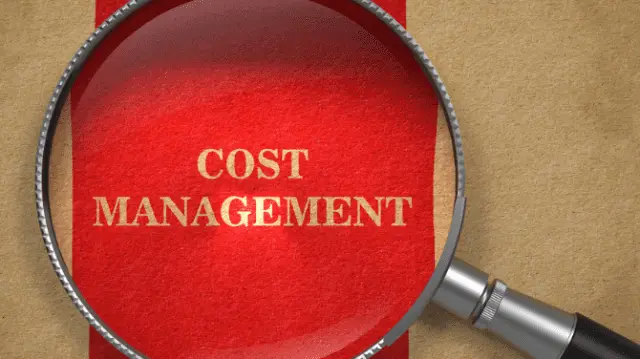The market for fleet management systems is expected to grow significantly in the next few years. This is due in large part to the many benefits these systems offer businesses. In fact, a recent study found that businesses using fleet management systems save an average of 10% on their overall operating costs.
Another study conducted by the Aberdeen Group found that the use of fleet management systems is on the rise, with nearly 60% of surveyed companies planning to implement or expand their use of these systems in the next 12 months.
There’s no denying that fleet management systems can be a big help when it comes to reducing operating costs. But how exactly can these systems help you save money? In this blog post, we’ll explore some of the ways of Reducing Labour Costs in Fleet Management. From reducing fuel consumption to improving vehicle maintenance, read on to learn more about how these systems can benefit your business.
Understanding Fleet Management Systems

Fleet management is the process of optimizing the operation and maintenance of a company’s vehicle fleet. The goals of fleet management are to reduce the total cost of ownership (TCO) of the fleet, improve vehicle utilization, and ensure compliance with all regulatory requirements.
To achieve these goals, fleet managers must implement effective policies and procedures around vehicle acquisition, financing, insurance, driver management, maintenance, and disposition. When done properly, fleet management Remove featured images can lead to significant cost savings for a company. For example, by improving vehicle utilization, a company can avoid the need to purchase new vehicles as often. And by implementing preventative maintenance programs, a company can avoid costly repairs down the road.
Read Also: Cost to Build an App in 2023
Types of Fleet Management Costs

There are six main types of fleet management costs:
1. Fuel Costs
Fuel is the largest expense for most fleets. Fleet management systems can help you save on fuel costs by optimizing your routes and monitoring your drivers’ habits.
2. Maintenance Costs
Vehicle maintenance is the second largest expense for fleets. Fleet management systems can help you keep track of your vehicle’s maintenance schedules and records, and can even help you find discounts on parts and labor.
3. Vehicle depreciation Cost
Vehicle depreciation is the fourth largest expense for fleets. Fleet management systems can help you track your vehicles’ depreciation rates so you can budget accordingly.
4. Salary Expenses
Driver salary is the third largest expense for fleets. Fleet management systems can help you track your drivers’ hours and miles driven, which can help you optimize their routes and reduce their overtime pay.
5. Insurance claim costs
Insurance claim costs are a type of fleet management cost that is often overlooked. Fleet management systems can help you track your vehicles’ insurance claims so you can budget accordingly.
6. Towing and recovery costs
Towing and recovery costs are another type of fleet management cost that is often overlooked. Fleet management systems can help you track your vehicles’ tows and recoveries so you can budget accordingly.
Read Also: How Much Does it Cost to Build Logistics App?
Fleet Management Systems Features & Benefits

Fleet management software is a type of business software that helps fleet managers optimize their fleet operations. Fleet management software typically includes features such as GPS tracking, vehicle maintenance tracking, driver management, and dispatch management. read about these core features of this software in detail below:
GPS Tracking
GPS tracking is a core feature of most fleet management software. GPS tracking allows fleet managers to track their vehicles’ locations in real time, which can help them optimize their routes and reduce fuel costs.
Vehicle maintenance
Vehicle maintenance tracking is another common feature of fleet management software. This feature helps fleet managers track their vehicles’ maintenance schedules and records, and can even help them find discounts on parts and labor.
Driver Management
Driver management is another common feature of fleet management software. This feature helps fleet managers track their drivers’ hours and miles are driven, which can help them optimize their routes and reduce their overtime pay.
Dispatch Management
Dispatch management is a final common feature of fleet management software. This feature helps fleet managers dispatch their vehicles to the best possible routes based on traffic conditions, weather, and other factors.
How Fleet Management Technology Can Help You Cut Costs?
It’s no secret that the cost of owning and operating a fleet can be expensive. But what many fleet managers may not realize is that there are a number of ways to cut costs with fleet management technology.
Fleet management systems can help you cut costs in a number of ways, including:
1. Reducing fuel expenses: A good fleet management system can help you track and manage your vehicles’ fuel usage. This can help you identify and address any issues that may be causing your vehicles to use more fuel than necessary, such as inefficient driving habits or maintenance problems.
2. Cutting maintenance costs: Fleet management systems can also help you keep track of your vehicles’ maintenance needs, so you can ensure they are always properly maintained and don’t need repairs unnecessarily.
3. Improving driver safety: Safe drivers are less likely to get into accidents, which can save you money on repair and insurance costs. Fleet management systems can help you improve driver safety by providing tools like real-time tracking, speed limit alerts, and geofencing.
4. Reducing administration costs: A good fleet management system can automate many of the tasks that take up your time, such as vehicle scheduling, dispatch, and billing. This can free up your time to focus on other important tasks and save money on administrative costs.
Bonus Tips for Reducing Labour Costs in Fleet Management Systems
There are a number of fleet management software options available on the market, each with its own set of features and benefits. When choosing a system, it’s important to consider your specific needs and how the system can help you cut costs.
Here are a few things to look for in a good fleet management software:
1. Cost-Saving Features: Look for a system that offers features that can help you save money, such as fuel tracking and optimization, maintenance reminders, and GPS tracking.
2. Ease of Use: Choose a system that’s easy to use so you can avoid costly mistakes. A good system will have an intuitive interface and clear instructions.
3. Scalability: Make sure the system you choose can grow with your business. Look for a system that’s flexible and can be customized to fit your changing needs.
4. Support: Choose a system from a company that offers excellent customer support in case you have any questions or run into any problems.
Bonus Tips for Reducing Labour Costs in Fleet Management
There are other ways that can help you reduce your Fleet Management cost considerably. Follow these tips:
1. Review your current fleet management system and identify areas where you can make changes to reduce costs.
2. Make sure that your fleet management system is integrated with your other business systems, such as accounting and inventory, to help reduce duplication of data entry and improve efficiency.
3. Utilize technology to automate tasks such as vehicle scheduling, maintenance reminders, and driver logbooks. This can help reduce the need for manual input and save time and money.
4. Evaluate your current supplier contracts and pricing to ensure that you are getting the best possible rates. If necessary, renegotiate terms or find new suppliers that can offer more favorable terms.
5. Review your fuel usage and consider ways to reduce consumption through better routing, driver training, or the use of alternative fuel sources. Fuel is typically one of the largest expenses for a fleet so even small savings can have a big impact on the bottom line.
6. Use a fleet management tool like GPS tracking to help you monitor and improve vehicle utilization. This can help you identify underutilized vehicles and make better decisions about when to replace them or add new ones to your fleet.
7. Implement policies and procedures to help ensure that your vehicles are properly maintained. This can help reduce breakdowns and extend the life of your fleet.
8. Educate your drivers on the importance of safe driving and proper vehicle care. This can help reduce accidents and improve driver morale, both of which can save you money in the long run.
9. Regularly review your fleet management system and make adjustments as needed. This will help you keep up with changing needs and ensure that your system is as effective and efficient as possible.
10. Create and follow a preventative maintenance plan for your fleet. This can help you avoid costly repairs and downtime by addressing issues before they become problems.
11. Optimize driver routes to reduce travel time and fuel costs. This can be done using a GPS tracking system or by manually planning routes based on traffic patterns and other factors.
12. Offer incentives to drivers who operate their vehicles in a safe and efficient manner. This can help encourage good driving habits and improve your bottom line.
13. Make sure that your fleet management system is up to date and accurate. This includes having the latest software updates and ensuring that all data is entered correctly.
14. Use reports and analytics from your fleet management system to identify areas where you can improve efficiency and save money. This information can be used to make changes to your system or implement new policies and procedures.
15. Have a plan in place for when vehicles need to be replaced. This will help you budget for new purchases and avoid unexpected costs.
Conclusion
Fleet management systems can help you cut costs in a number of ways, from reducing fuel consumption to improving maintenance and driver performance. By using a fleet management system, you can track your vehicles and drivers in real-time, meaning you can quickly identify and resolve any issues that might be causing problems. With the right fleet management system in place, you can save money on your transportation costs and keep your business running smoothly.
We are proud to mention that our work has been recognized by leading B2B reviews and research platforms like GoodFirms, Clutch, MirrorView, and many more.


How Can Fleet Management Systems Help You Cut Costs?